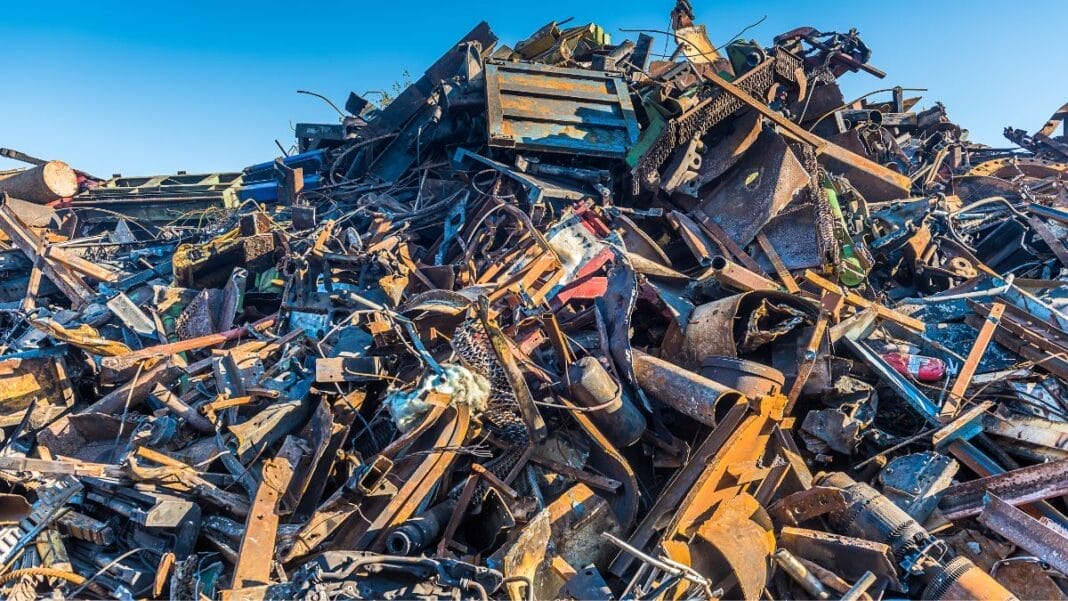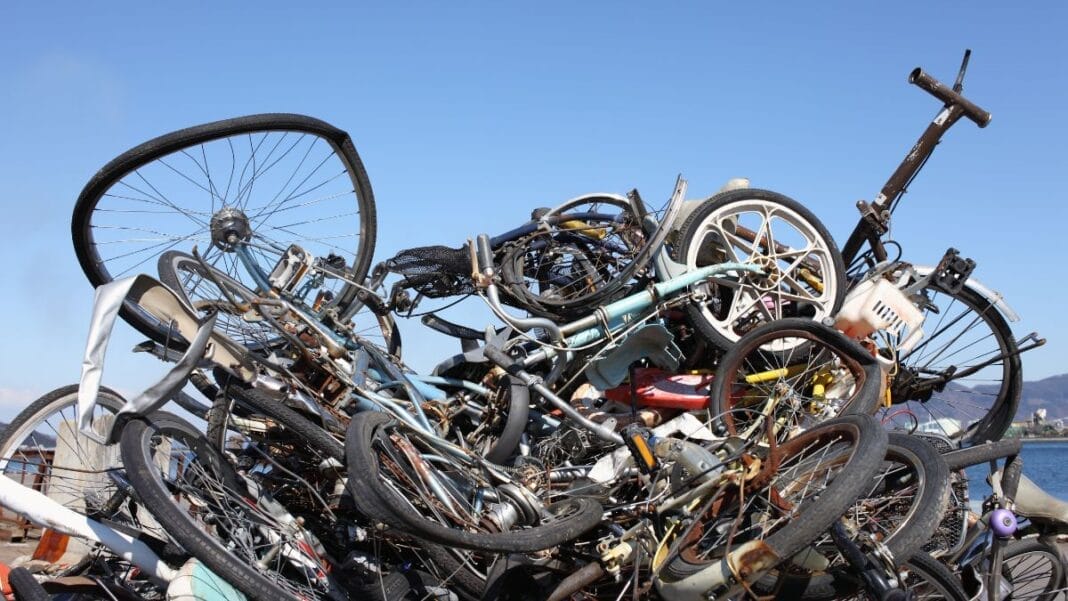Scrap metal provides a surprising trove of hidden value in the form of recyclable steel, aluminum, copper, and other alloy discards. As natural mineral deposits deplete rapidly yet metallic goods consumption accelerates, humanity urgently needs sustainable metal access.
Scrap metals aptly fit that solution. Hence, scouting construction debris, obsolete electronics, and factory surplus in hopes of finding metallic treasures is becoming increasingly popular. This comprehensive DIY manual equips you to locate scrap metal effectively, handle it safely, and profit through artful reuse or innovative selling strategies. Let’s embark on unearthing modern-day metal riches!
Where to Find Scrap Metal for Money
Targeting the right territories is crucial for any successful scavenging venture. Here are prime scrap metal hunting grounds and hotspots:
Hardware Stores
Hardware stores receive metal inventory in bulk packaging that is disposed of after use, broken display items, and excess tools. Due to insufficient inventory control, they may unintentionally toss still functional metal goods.
Hotspots:
- External garbage bins and skips
- Storage rooms and back warehouses full of excess metal shelves, trolleys, and defective appliances marked for disposal.
Tips:
- Check external bin areas routinely for tool boxes, ladders, tire rims, and metallic store fixtures amidst general rubbish.
- Build rapport with managers to access discards before trash collection by offering to remove these for recycling.
Read More: The Importance of Scrap Materials Management
Scrap Yards
While counterintuitive, even established scrap yards can render surprise treasures due to the speed and chaos of incoming material volumes. Mistakes in waste stream assessments are common.
Hotspots:
- Fresh intake areas – valuable specialty metals can be mixed with standard grades during high turnover.
- In long-term material storage yards, items get stockpiled, forgotten in messy heaps, and left decaying when markets fluctuate.
Tips:
- Learn to spot distinct metal types – brass often looks similar to copper.
- Search for discarded electronic components like transformers and capacitors amidst piles that contain recoverable metals.
Industrial Zones
Dense industrial clusters offer reliable motherloads since metal use in utilities, transport, and installations remains ubiquitous globally. Even the smallest factories utilize some metallic inputs.
Hotspots:
- Old industrial warehousing belts, controls, motors, switches, valves, and instrumentation panels frequently get scrapped when sites downsize or retool facilities.
- Dilapidated manufacturing facilities often harbor a treasure trove of scrap metal—vats, boilers, generators—before being demolished for real estate revitalization.
Tips:
Research industrial areas experience high rates of closures, downsizings, and automation transitions, which generate surplus metal waste and decommissioned machinery.
Building Construction Areas
Active building sites provide daily metal litter from material usage – wiring conduits, reinforced steel bars, plumbing pipes, drywall studs, and carpentry scraps like untreated wood offcuts.
Hotspots:
- Foundation digging yields hidden treasures of old scrapped metal foundations, bricks, and debris buried onsite over decades.
- Renovation projects allow access inside buildings, removing walls, doors, and metallic fittings well before demolition.
Tips:
Target new housing projects planned in recently redeveloped older industrial areas likely contain rich buried metallic histories.
Auto Repair Shops & Recyclers
The auto industry epitomizes universal metal usage in vehicles and thus generates enormous associated scrap streams.
Hotspots:
- Mechanic Garages change huge metal components like gearboxes and alternators daily due to routine maintenance demands.
- Scrap cars stripped of functioning engines, mirrors, and mufflers still leave behind a metallic husk chassis.
Tips:
Develop relationships with mechanics to access broken parts before their scrap dispersal, fetching them marginal value only.
Electronic Waste Recyclers
Rapid digital transitions plus built-in obsolescence in gadgets and appliances produce skyrocketing electronic scrap volumes, though with recoverable metal concentrations.
Hotspots:
Discarded desktop CPU servers contain gold wiring apart from steel cabinets and aluminum casings.
Shops recycling lead acid batteries and cable wire have a high turnover of copper and lead.
Tips:
Learn dismantling skills to extract PCBs, motors, and chips containing specialty metals like palladium tantalum.
Strategic Scouting Tips
Certain universal tactics will vastly improve your scrap metal collection across any site:
Stealth Mode Scavenging
- Avoid disturbing site operations or residents to avoid attracting negative attention during scouting and hauling finds.
- Remove small, subtle batches consistently over days rather than large, suspiciously conspicuous piles in one attempt if planning reuse.
Relationship Building
- Chat politely with guards, contractors, and mechanics. Explain your recycling intentions and interest in specific metals discarded onsite. They may proactively inform you or assist with difficult removals.
Safe Handling
- Wear closed gloves, boots, full clothes, and safety goggles when scouting debris with risks like sharp protruding metal. Carry a first aid box.
- Research and identify hazardous trash correctly, such as asbestos panels or toxic waste dynamically blended into piles to avoid health impacts. Leave such scrap untouched.
Now, onto navigating the three key choices once scrap metal enters your custody through scavenging prowess or buying networks.
Selling Scrap for Cash
Selling recyclable metal scrap remains the most straightforward option to unlock inherent value instantly. Junkyards offer base rates, but better profits exist, building direct relationships with recycling processors.
Key Steps:
- Clean finds thoroughly – Metal content deductions apply for attached paint, plastic, and rubber.
- Sort into standard grades correctly – iron aluminum grades for pricing ease. Weigh batches.
- Compare pricing across recycling yards, dealers, and online sites, paying prevailing market rates according to commodity indices.
- Leverage metal trading apps and digital weigh stations to conveniently sell small mixed metal batches from home recycling.
Fishing in Ponds, Rivers and Seas
Bodies of water, including ponds, rivers, creeks, lakes, and oceans, offer unique scrap metal foraging opportunities. Centuries of settlement near waterways and recreational activities mean all kinds of metallic artifacts are submerged routinely by accident or intention. This offers fruitful urban mining prospects beneath us in local waters.
Hotspots:
- Streams near historical village communities or wartime ruins can contain treasure troves of weapons, armor, jewelry, cutlery, and coins that have been gradually lost over generations.
- Old wells, quarry pits, and swamps in rural farmlands also serve as convenient, surreptitious dumping grounds for all categories of scrap debris, resulting in a time capsule below ground.
- Popular picnic spots around rivers/lakes with generations of visitors inevitably compile a trove of fallen metallic personal valuables like watches, keys, and gadgets.
- Even oceans render occasional windfalls in the form of shipwrecks or lost airplanes at sites accessible through scuba diving and metal detectors.
Tips:
- Utilize trustworthy old documents, maps, and folk stories indicating previous settlements and battles near ponds or rivers in your region to pinpoint fruitful search sections.
- Partner with local historical societies and museums, which may share inputs on speculated locations with suspected buried relic treasures.
- Master necessary diving boating safety protocols for deep water searches. First, search closer to shore in more easily scannable shallow, low-current areas.
Rusted metal scrap recovered from prolonged submersion requires rapid cleaning treatments using chemical baths, wire brushes, and grinding tools to arrest deterioration before restoration works or sales. Nevertheless, invested time and effort frequently unearthed unique, coveted antiquities and modern metallic valuables just below the water’s surface.
Crafting Scrap into Artwork
Scrap metals provide raw material for incredible artistry – from sculptures and decor pieces to jewelry and steampunk mechanical models. Essential tools like hammers and welding apparatus open creative doors.
Key Steps:
- Visualize design sketches before starting hands-on work.
- Measure and mark metal pieces correctly before attempting alterations. Always leave room for adjustments.
- Smooth out edges and projections thoroughly to prevent cuts and complete safety for handling artwork.
- Apply protective sealant coating for longevity once the final shape is achieved if displayed outdoors.
Building Scrap into Functional Items
With some skill, scrap metals can be constructed into usable products using commonly available nuts-bolts, hinges, and locks.
Key Steps:
- Assess the condition of metal scrap piles realistically from stability, corrosion, and malleability perspectives before conceptualizing any new products. Rusty, paint-encrusted pieces may need extensive preparatory cleaning beforehand through chemical dipping or grinding equipment.
- Study dimensions and assembly feasibility aspects for the product planned—a scrap metal stool requires different joining expertise than a storage trunk. If missing fittings like wheels, handles, and lubricants are unavailable in personal scrap reserves, obtain them in advance.
- Follow safe welding, drilling, and cutting protocols using protective eyewear, gloves, clothing, and secure operation tables.
Final Thoughts
Rather than remain ignored urban ore, discarded metal shards deserve renewed extraction for their immense utility value, ranging from commodities trading to hobbyist tinkering adventures. Once derided as mere junk, scrap metal offers promising sustainable redemption amid resource constraints through efficient recovery systems.
The time has come for communities to reconsider trash – each broken appliance or building beam presents an environmental boon. Our planet and wallets will thank us for pursuing scrap metals as responsible wealth creators. Remember basic safety, carry the right tools, and most importantly – enjoy the meandering, adventure-filled journey to uncover modern material treasure stashes! Happy hunting!


